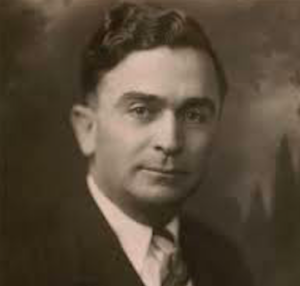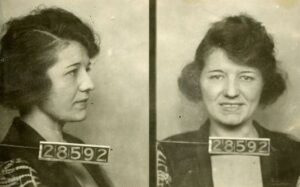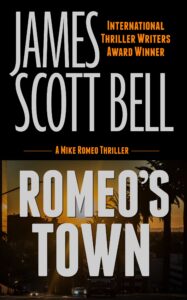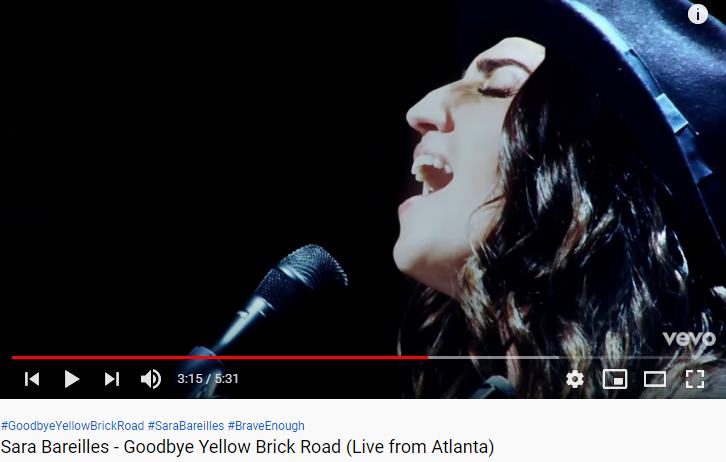A few days ago I was pounding away at the keyboard when the Bride came in through the garage where she was met with a wall of sound as AC/DC’s Thunderstruck blared from my computer. “Hey! Turn it down!”
I didn’t hear her at first, but from my desk I saw her with two hands filled with groceries in plastic bags. “What was that?”
“I said. Turn. It. Down!”
“Oh.” I lowered the decibel level so she wouldn’t shout. “I didn’t hear you. The music was too loud.”
“Oh, that’s what it was.”
Snarky.
“Sorry. I’m…”
“Writing the climax.” She’d been there before.
“Yessum.”
“How can you think with the music at that level and him screaming at the top of his lungs?”
“I wasn’t listening.”
She gave me The Hairy Eyeball. “So why was it so loud?”
“Background music” I glanced down to lower the volume even more. “There’s lots of action and shooting and…” I was talking to the empty hallway. I finished my answer anyway. “It’s how I work.”
She couldn’t hear me in the kitchen, so I turned the music back up (but not as loud) and went back to my fictional world.
I seldom write in silence. For one thing, I need something to cover the sound of snoring from Willie the Guard Dog (our rescue Shih Tzu) who sleeps beside my desk while I work.
My office opens to the front foyer and there are only two walls, both filled with bookshelves, floor to ceiling. Some authors require walls and doors to cobble together their sentences. That works for them, but I’ve never had that luxury. I’ve mentioned that I can write anywhere, so distractions aren’t an issue, but I need music to fill the void.
The genre differs with my mood, the day, and where I am in the manuscript. When I’m working on the Red River books set in the 1960s, it’s classic rock and roll from the year I’m writing about, or before. This tenth book in the series is set in 1969 so the music is revolutionary and dark with the last vestiges of the bubble gum era, along with a few country songs from that time.
It’s my hope that faithful readers are drawn into that period with the mention and recollection of the song. Music is a time machine and can often transport us to a past time and place such as cruising with high school friends, at an outlaw party when staying over with a friend, or that time (and we’ve all been there) when listening to the same song over and over after that moment’s love dropped you like a hot potato saying, “I think we need to see other people.” (But I’m not bitter after all these years.)
Adding musical spice to a manuscript is sometimes enough to set a scene in the reader’s mind, or as Jerry Jeff Walker said at the beginning of London Homesick Blues for the second time after someone forgot to start the tape, “I gotta put myself back in that place.”
Playing period music also puts me in that time period during the creative process, and though I don’t pay it much attention, it usually brings something to the piece I’m working on. It seeps into my characters actions, phrasing, or mood.
I once had an interviewer ask why I hadn’t considered releasing the newest book along with a CD of the music mentioned throughout the novel. I explained how it’s all right to use the title and artist, but the cost of licensing the music would be astronomical.
As I worked on The Texas Job (February, 2022), I played music that was popular in 1931, during the Great Depression. Those tinny, scratchy old sounds put me in that place I’d never visited and even sparked bits of dialogue through those period lyrics.
The last few years, when working on the contemporary Sonny Hawke novels mostly set along the southern Texas border, I played a lot of country music as I worked.
Brief note: I’m referring to real country such as George Strait, George Jones, Dwight Yoakum, Tammy Wynette…essentially music released before the year 2000, because I can’t stand this new pop-bubble-gum-rock and roll-rap-crap that passes for country music these days.
Whew. Now I feel better.
Back on task. There was lots of music that set the Sonny Hawke scenes in my mind. Carmelita by Yoakum, Cowboys Like Us and The Seashores of Old Mexico by Strait, What a Crying Shame by the Mavericks, or the new Marty Stewart concept album, Way out West, all played over and over as I worked through the first two acts of each book.
But here comes the Third Act and the downhill slide to the climax. That’s where the action picks up, and the music helps drive pace. Nothing but AC/DC works. I play it over and over and over and over….
…letting the beat soak in. I have an album (remember those large, black fragile discs we played at parties or alone in our rooms at 33 1/3 on things called a record player?) titled Let the Good Times Roll that features interviews with a number of people about rock and roll. One unnamed official in some small backwater town in the late 1950s, goes on a rant about rock and roll, “It’s driving the kids to ruin, and when you ask them (the kids) what they like about it they all respond with, “The beat, the beat, the beat.”
We were so right.
It’s the beat (or the pacing) that drives the novel you’re reading right now. It’s the beat that drives the story for me when I’m working. It’s the beat of your own writing rhythm, the beat of your own works. Music and writing are similar in many ways. They both have rhythm and pacing, ingredients that are necessary for a successful novel or short story.
I received an email from a fan this morning which sparked today’s blog. He wrote, “I’ve listened to (your novel) The Rock Hole at least forty times. What I figure is that people listen to songs over and over, so why not (novels). Your work sings like a song.”
What a humbling comment.
The music. The music of creating fiction. The music we see on the page and hear in our minds. The music of writing.
I don’t listen to the words as I work, and don’t sing along. Most of the time I can’t tell you what specific title is playing, but I get lost in the rhythm, the beat, the driving pulse of the song I’m working on. I oftentimes find myself sitting on the edge of the chair pushed back from the desk, as if ready for action, while the music thunders and riffs repeat over and over again, digging into and driving my story forward.
At times I take my fingers off the keyboard for a few seconds as a break at the end of a sentence, idea, run of dialogue, or chapter, and I find myself playing air guitar for one or two moments, just a flick of the fingers, which might be a different form of subconscious writing.
Hummm…
Thank the good lord there’s no video to record those moments.
Sidenote: A few minutes ago, I was pounding away on an action scene in the WIP when the idea for this post popped into my head. It was my subconscious reminding me I needed something for this week. I opened a new page and typed the first sentence I didn’t know was waiting to get out, leaving Hells Bells playing at a level guaranteed to cause partial facial numbness and hearing loss. The Bride came in from her walk and passed by, eyes rolling, hands on her hips.
“Climax?”
I selected at least two answers that was guaranteed get me the Hairy Eyeball again, and cast them aside before telling her the truth. “Kill Zone column.”
“Can you turn it down, then?”
“What’d you say? Can’t hear you.”
Telling me I was #1, she left and…
…where was I. Oh, yeah. Now I’m not saying it’s always loud music that’s necessary. There are quiet, insightful times when youngsters are talking to older folks, when the story slows, or an emotional moment develops between two characters.
When that happens, its ballads, soft and low, or soundtracks to such movies as Last of the Mohicans, Lonesome Dove, or The Natural. John Fogelberg, John Denver, and Michael Martin Murphy are here with me, and always, at some point, the most haunting song I’ve ever heard by Zane Williams, Pablo and Maria. Old, barely-healed wounds that still seep from time to time and are drawn to the surface by just the right piece of music.
I’m consumed by emotion. My stomach tightens. Quivers. A lump rises in my throat…
…as music drives the narrative.
When I’m finished with that chapter or scene, I have to take a break from the manuscript. That’s when I knock out a solemn, reflective newspaper column. Maybe something recalled from a time when old men took kids to fish from wooded creek banks and talk quietly as memories are made. Family time.
The music can get me in trouble, also. I once wrote a newspaper column about dogs I’ve known, and have lost. I related the day my oldest daughter who was around seventeen at the time had to put her Lab down. Eaten up with cancer, Ditto was nearing the end of her days and the Redhead was forced into adulthood. She couldn’t do it alone. I drove her and Ditto to the vet and sat in the floor with them both as that sweet old dog put her head on my sobbing daughter’s lap one last time and said goodbye with sad brown eyes telling her, “It’s all right to let me go.”
Dammit! There’s that lump again.
It was a heartfelt column driven by music my readers never heard that garnered more emails and letters than any of my columns before or since.
So what’s the purpose of this post that’s bounced back and forth like a pinball in play? (You think this was chaotic, you should see inside my head.) Use whatever works for you to be creative and don’t let anyone tell you that writing requires silence encapsulated by four walls and a door.
Write while listening to music, or sitting at your desk, or in your favorite chair, or even in bed. Writing is personal, and no matter if it’s show tunes, classic music, hair bands, rock, country, or kids songs, (B.I.N.G.O and Bingo was his name-o…) find what works for you!
Now, where was I in that manuscript I was working on just a few minutes ago. Oh, yeah, Hells Bells and that shootout.
Here we go again.

 Can a body fit in your car trunk?
Can a body fit in your car trunk?

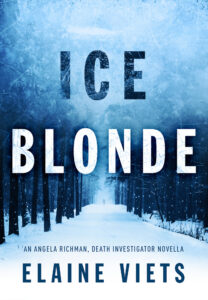
 There was more. While the person was defrosting, the pathologist has to check the body every two hours. The hands and feet would probably defrost first, and then the pathologist could get scrapings from under the nails. As the defrosting progressed, the pathologist would draw blood and get fluids, including ocular fluid from the eyes, and if the person was a woman, check for seminal fluid in the vaginal vault.
There was more. While the person was defrosting, the pathologist has to check the body every two hours. The hands and feet would probably defrost first, and then the pathologist could get scrapings from under the nails. As the defrosting progressed, the pathologist would draw blood and get fluids, including ocular fluid from the eyes, and if the person was a woman, check for seminal fluid in the vaginal vault.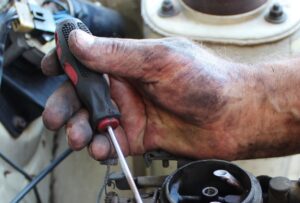
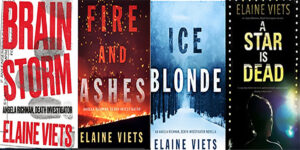 Now in audio! All my Angela Richman mysteries and the first three Dead-End Job novels. Listen to them during your 30-day free trial with Scribd.
Now in audio! All my Angela Richman mysteries and the first three Dead-End Job novels. Listen to them during your 30-day free trial with Scribd.
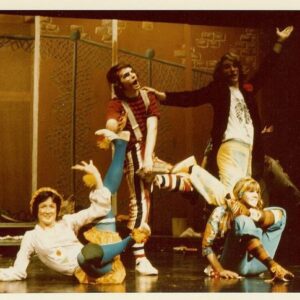 There was a time in my life when I thought I wanted to be an actor. As I mentioned in a
There was a time in my life when I thought I wanted to be an actor. As I mentioned in a 
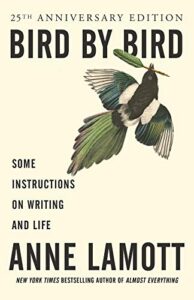
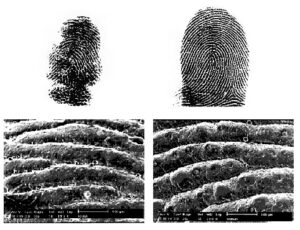
 July 12, 1922. It was hot in Los Angeles. A twilight crowd of 5,000 cooled off at the Hollywood Bowl, listening to an eighty-piece orchestra play a bill of popular music under the baton of maestro Albert Hurtz.
July 12, 1922. It was hot in Los Angeles. A twilight crowd of 5,000 cooled off at the Hollywood Bowl, listening to an eighty-piece orchestra play a bill of popular music under the baton of maestro Albert Hurtz.